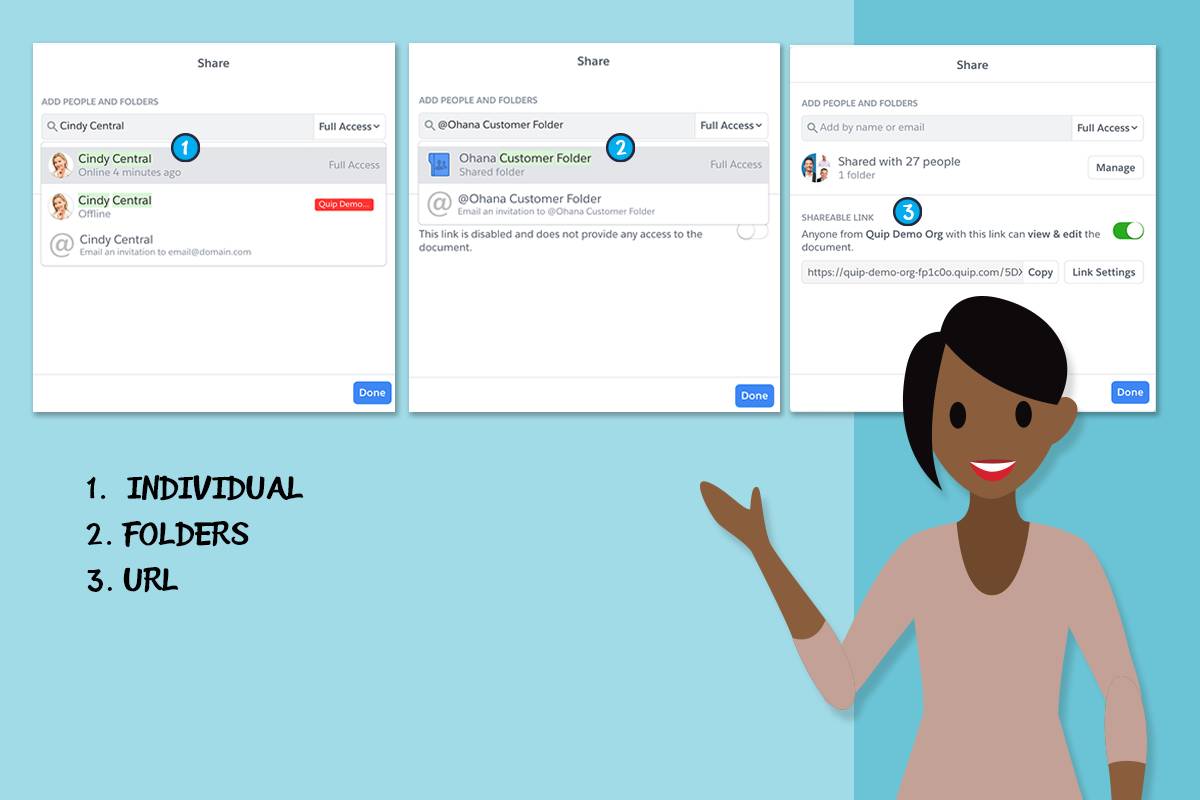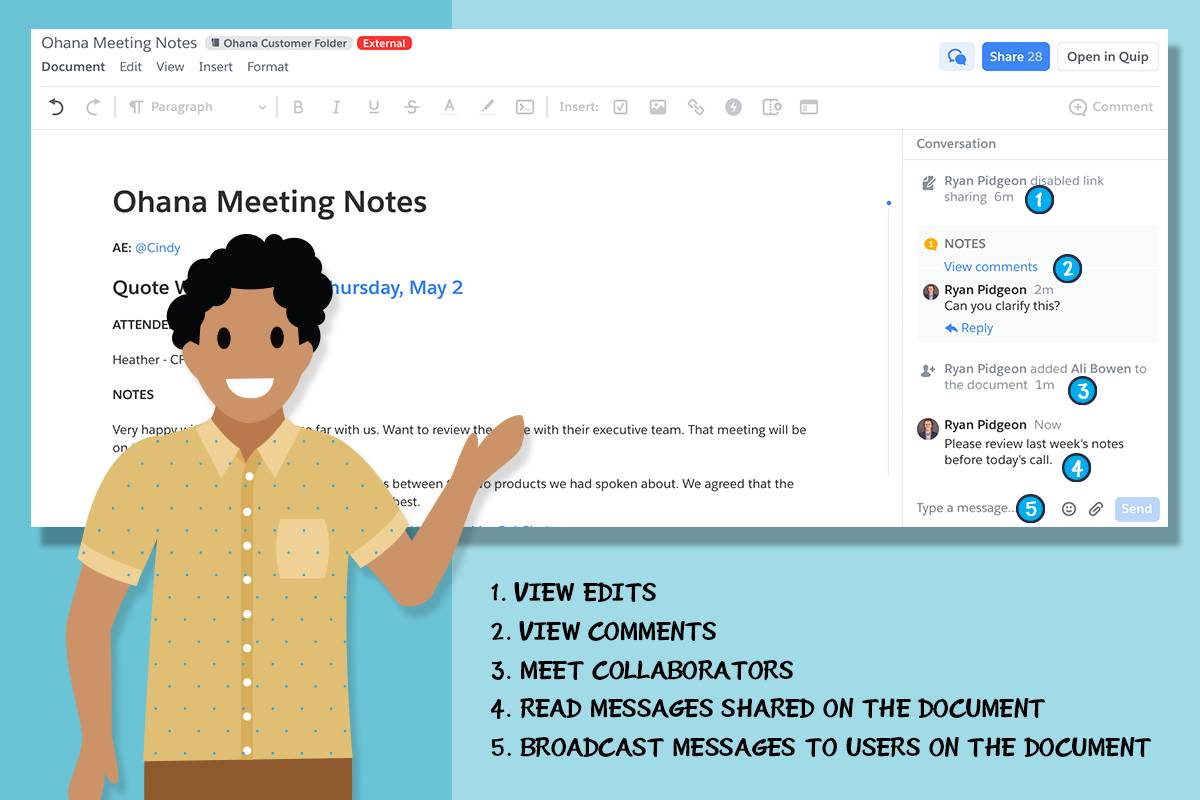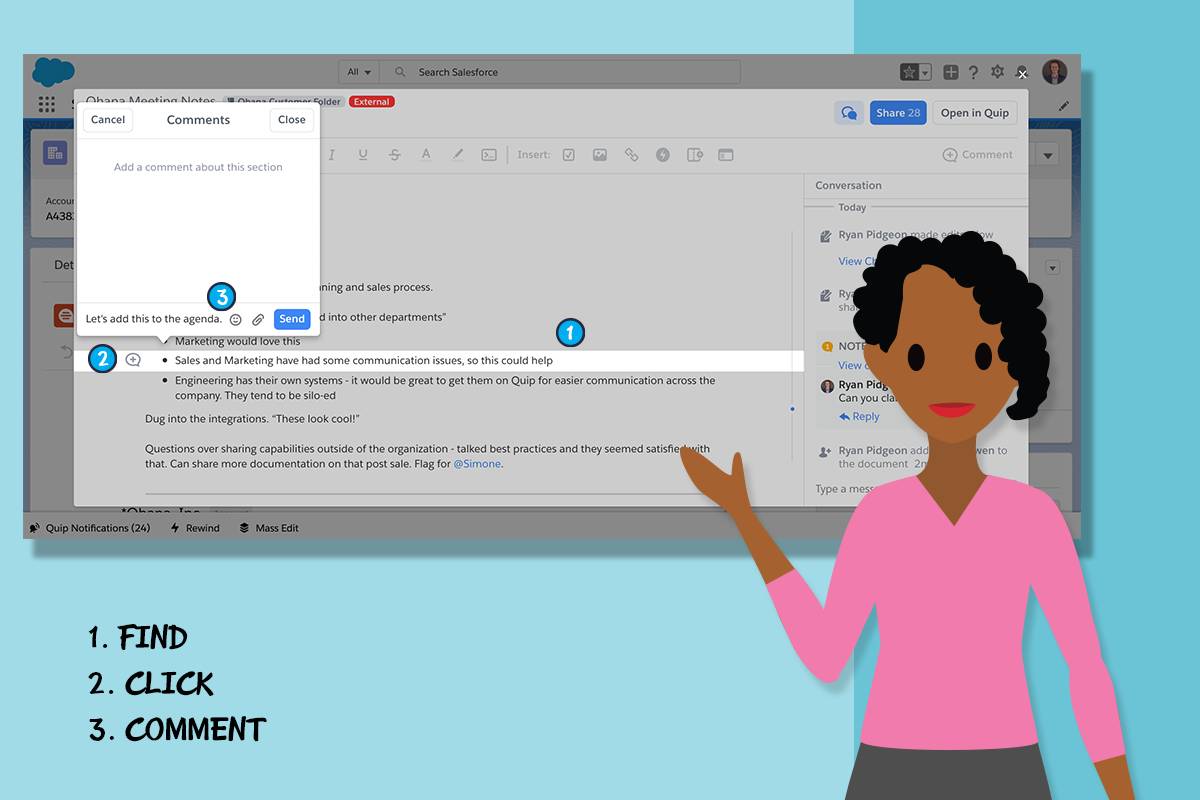Collaborate with Quip Advanced
Learning Objectives
After completing this unit, you’ll be able to:
- Share Quip documents from Service Cloud.
- Comment and chat within Quip documents in Service Cloud.
Share and Share Alike
Collaboration is Quip’s bread and butter. And it’s this collaboration that not only makes sharing tasks and working together with your team fast and easy. It actually makes work and working together more fun.
There are three different ways to share Quip content with everyone in your crew. Each of the three are accessible via the Share button at the top right corner of your doc window. (Make sure you’re in Expanded Mode.) From here, you can:
- Add individual people. Select Add People, then insert the name of who you’d like to share the doc with. A notification will be sent providing them with access.
- Add a group of people. Select Move to Shared Folder or Add to Shared Folder, then select where to move or add your doc. Anyone with access to this folder will also be granted access.
- Send via shareable URL. Select Get Link, then click Copy to copy the document's URL to your clipboard. Anyone you share this link with will have access.

When people from outside your organization join a document, you’ll see a red badge on the right side of your document’s title bar indicating as much.
Chat Is Where It’s At
Your team member being able to access your document is just the beginning. Now you’re ready for some deep and meaningful conversation. Quip docs gives you two, count ’em, two channels for talking to your collaborators: individual comment threads and the overall document conversation. You want details? Keep reading.
Conversation
Quip makes starting and keeping the conversation going easy. Every document, spreadsheet, and slide deck has a document conversation built into the sidebar on the right. It’s good for discussing the document in general or broadcasting messages to the collaborators. It contains the following info.
- A history of every edit made to the document
- A history of every comment made on the document
- A record of when people join (and leave) the document
More pertinent to our purposes here, it also contains: - Any messages people have posted to the sidebar itself.
- At the very bottom, a field for writing and sending messages to this sidebar.
Take a look.

Comments
Whereas conversations are intended for the document as a whole, comments are designed for talking about specific parts of the document. In general, you can just…
- Click the thing you want to talk about.
- Look for the comment button and click it.
- Leave a comment.

Assuming they haven’t muted their notifications, these are the people who will be notified when you leave a comment.
- The person who authored the content you’re commenting on
- Anyone you @mention in the comment itself
- Everyone already participating in an existing thread
And that, in a nutshell, is how Quip for Service Cloud takes collaboration with your team to a whole other level. Next, we take you through common use cases and demonstrate how Quip helps you handle them with ease.
Resources
- Article: Share Documents and Folders
- Article: Comments and Conversations
- Article: Live Apps